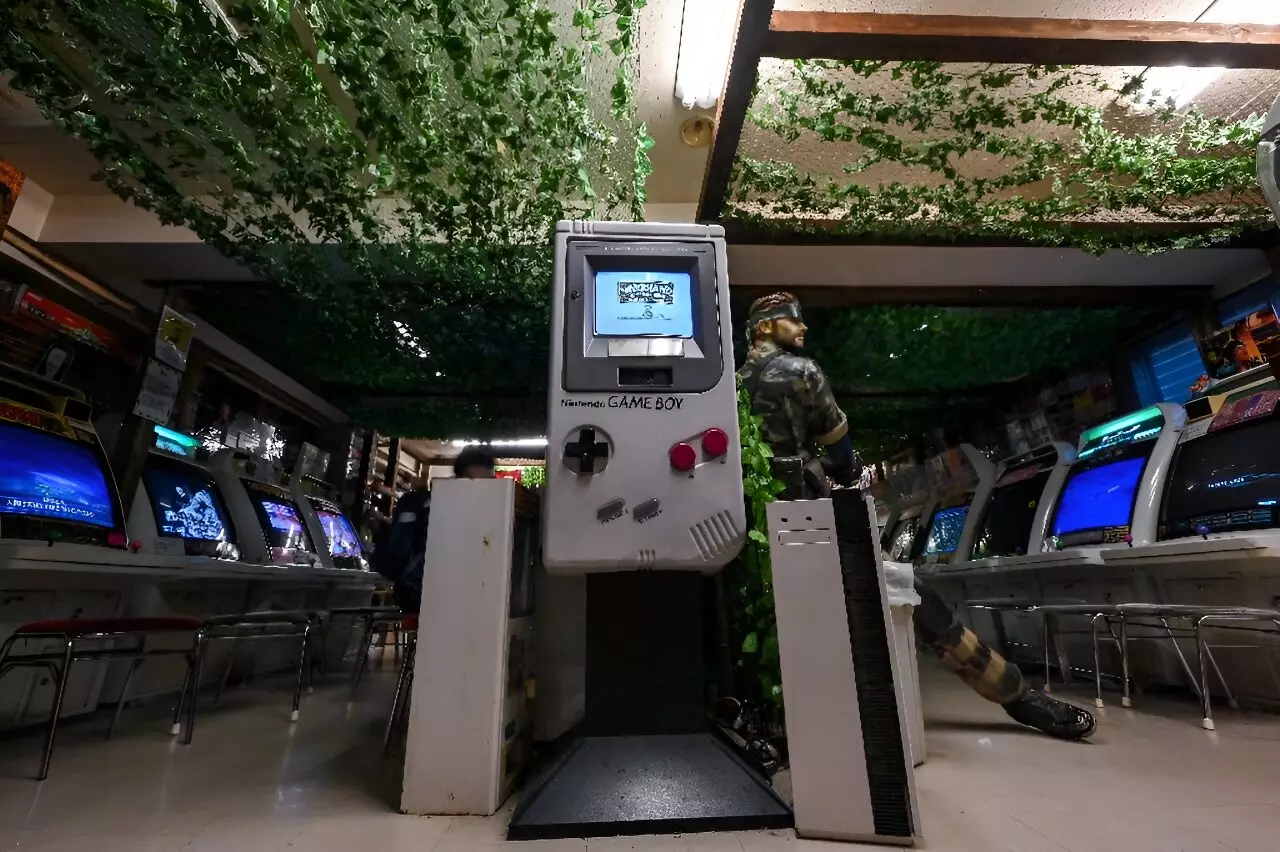In recent years, the global demand for vintage gaming consoles and memorabilia has surged dramatically, with hotspots emerging in places that celebrate the rich tapestry of video game history. Tokyo stands out as a prime example, with stores like Super Potato attracting both local and international collectors. A prominent figure in this revival is 23-year-old David Madrigal, who expressed unwavering enthusiasm after acquiring a PlayStation Vita in Tokyo for just $200, a steep discount compared to its usual price of $600 in the United States. For many enthusiasts like Madrigal, entering stores filled with nostalgic gaming treasures evokes an indescribable joy akin to a child’s delight in a candy store.
Madrigal’s experience underscores a broader trend impacting both the gaming industry and retro collectors alike. The unmistakable charm of older gaming systems, along with their distinctive aesthetics and design, captivates a generation that grew up amidst powerful home console revolutions. Stores such as Super Potato house a treasure trove of gaming nostalgia, including Game Boy cartridges, Sega Dreamcast units, and classic arcade machines that transport visitors back to the 1980s and 1990s.
The nostalgic pull of retro gaming extends beyond mere aesthetics; it also relates to a perceived decline in innovation within contemporary gaming. In the eyes of collectors like Madrigal, modern games often feel repetitive and formulaic. “When I think back to my childhood, companies dared to take risks and try new ideas,” he reflected. This longing for an imaginative and varied gaming landscape is echoed by many collectors who reminisce about the era when games were not bound by strict genre conventions or monetization strategies.
Hiroyuki Maeda, a noted video game historian, further elaborates on this sentiment. The uniqueness of certain gaming hardware and software, often launched with distinctive marketing strategies in different regions, adds another layer of interest for collectors. For instance, the Famicom and Super Famicom are celebrated in Japan, while their international counterparts may possess vibrant color schemes that evoke curiosity among enthusiasts visiting from abroad. This quest for rare and unseen gems fuels demand among collectors who feel compelled to acquire items that resonate with their personal journeys through gaming history.
The collector ethos can be a nuanced experience, as demonstrated by individuals like Proudro, a 50-year-old enthusiast who has curated an impressive collection of vintage gaming artifacts. He illustrates a common motivation among collectors: the nostalgia associated with childhood memories spent in gaming shops and friends’ homes. Proudro himself has amassed a striking array of games and consoles, showcasing them as a testament to gaming’s evolution.
Interestingly, despite his vast collection, Proudro admits he doesn’t actively play these games anymore. For him, simply being surrounded by the sights, sounds, and atmosphere of retro gaming is thrilling enough. His passion for the medium has led him to foster a community among fellow enthusiasts, creating opportunities for shared enthusiasm and appreciation for vintage gaming.
Some artifacts of this vintage lifestyle can astonish in terms of value, particularly as the gaming market has shifted dramatically over time. Once deemed practically worthless, retro games now fetch astonishing prices. A still-sealed copy of “Super Mario Bros.” sold for an astounding $2 million in 2021, a testament to the shifting perspective on the value of video game history.
As the retro gaming community flourishes, Proudro reflects on the challenges that have emerged. He bemoans the loss of the local shops where collectors once found treasures tucked away under layers of dust. Today’s digital landscape, characterized by online auctions and reselling, has diminished the thrill of the hunt, as rare items are increasingly monitored and exchanged in a global marketplace.
Another sentiment expressed by Proudro speaks to his desire for certain Japanese products to remain within Japan, paralleling the history of traditional art forms such as woodblock prints, which were often taken abroad to be appreciated before being repatriated. His perspective raises significant considerations about cultural identity and the importance of preserving homegrown heritage.
The resurgence of retro gaming serves as a powerful reminder of the lasting impact of gaming on culture and personal identity. As collectors continue to push the boundaries of nostalgia, it is essential to bear in mind the very essence of what draws individuals toward their past—an intersection of joy, innovation, and memory that transcends the more superficial aspects of gaming trends. Perhaps the future of gaming will balance reverence for the old with an adventurous spirit for the new, creating a beautiful harmony within this beloved art form.

